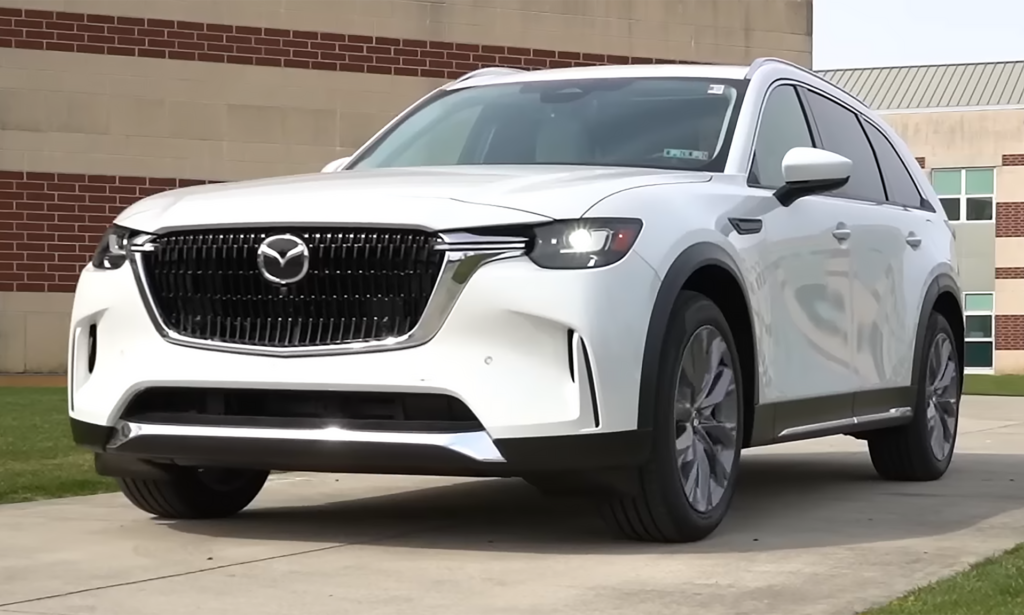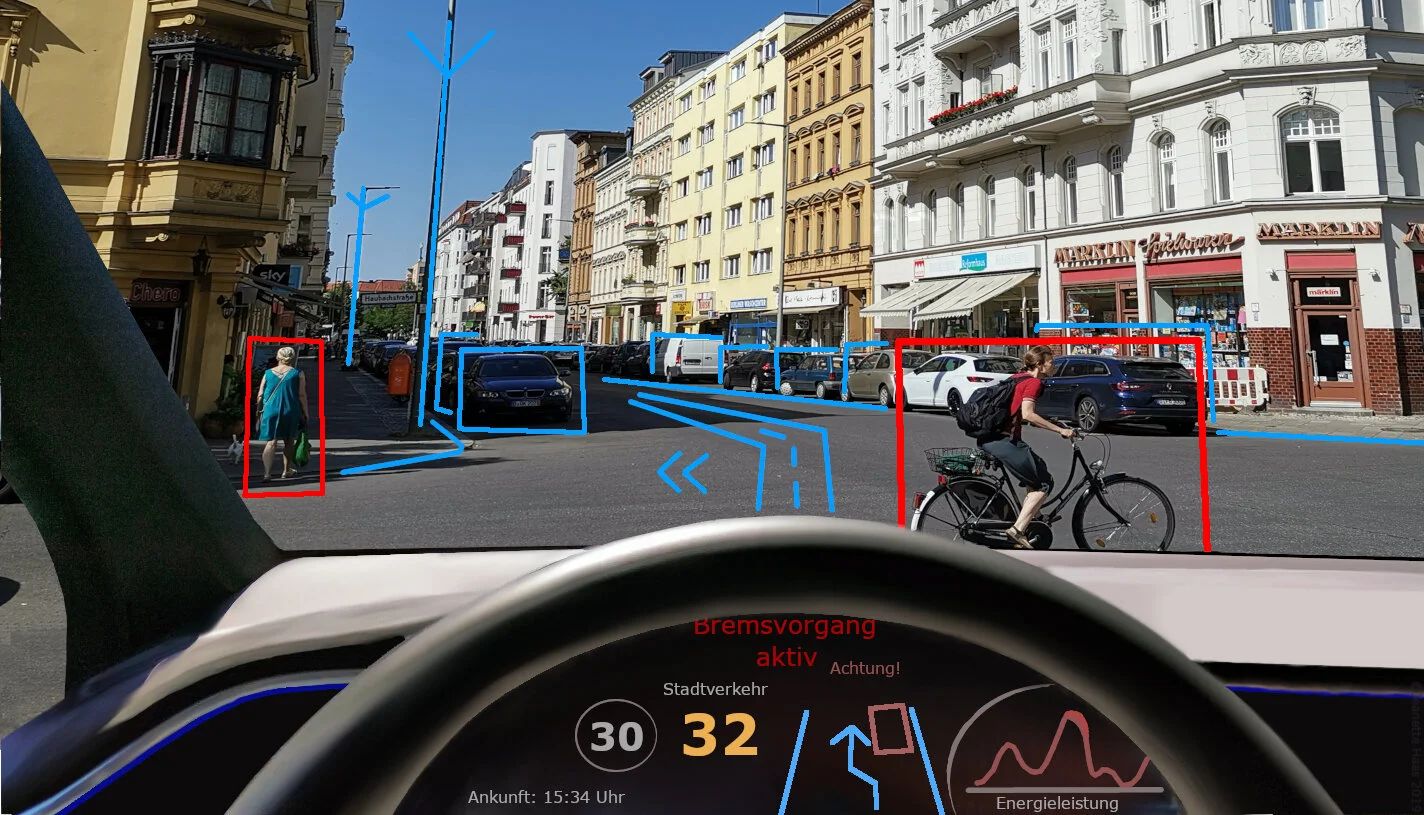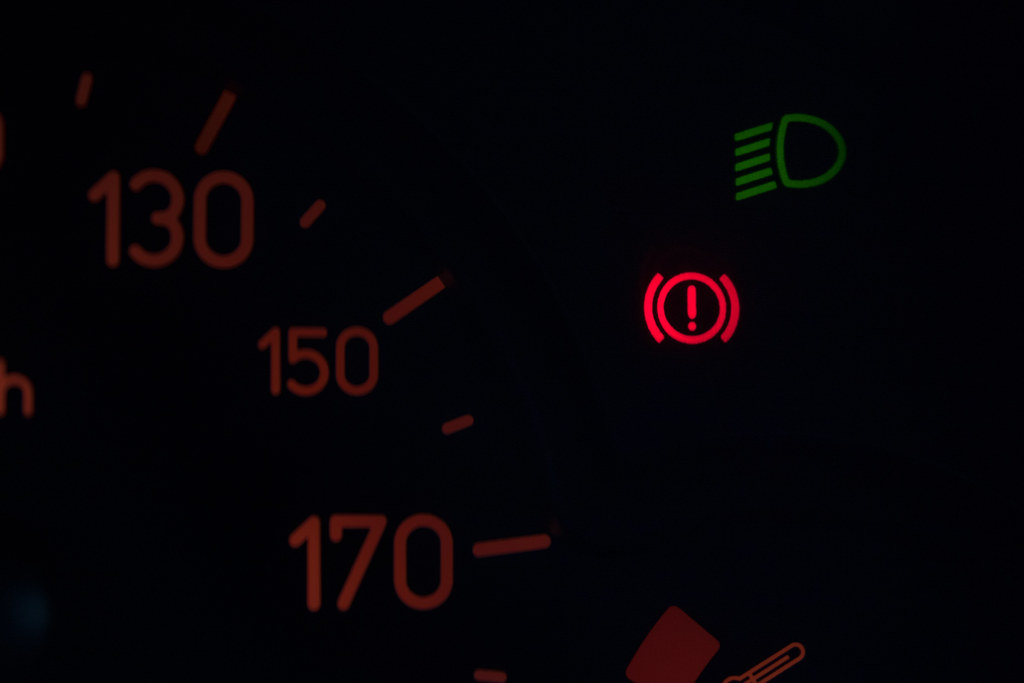
Imagine driving down the road when a light suddenly appears on the dashboard. This scenario is all too common, and for many drivers, it sparks a moment of confusion, perhaps even a scramble for the owner’s manual. While some dashboard symbols, often jokingly called “idiot lights,” are designed to be easy to understand, a survey by Goodyear Auto Service and Just Tires highlighted a concerning trend: 88 percent of young adults could identify an emoji, compared to only 51 percent who could identify a vehicle warning sign. This gap in knowledge isn’t limited to young drivers; it’s a widespread challenge.
Modern vehicles are intricate machines, and their dashboards are sophisticated communication hubs, packed with an array of symbols, warning lights, and indicators. These lights serve a crucial purpose: to provide a single place for you to review consolidated performance statistics and, more importantly, to alert you to potential issues. Ignoring these illuminated icons can lead to anything from minor inconveniences to serious mechanical failures, costly repairs, or even dangerous situations on the road. It’s unreasonable to expect a driver to know the meaning of every single dashboard light, as there can be hundreds of them, but understanding the most critical ones is paramount for vehicle safety and longevity.
In this in-depth guide, we will equip you with the essential knowledge needed to decipher the most important warning lights that demand your immediate attention. We’ll explore 14 simple yet critical dashboard symbols that you should never ignore, breaking them down into clear, actionable explanations. Our goal is to empower you to quickly spot issues and opportunities for your vehicle’s health, ensuring you can react appropriately and confidently when these lights turn on. Let’s delve into the first seven, focusing on those that signal immediate dangers and core system alerts, which often require swift action to prevent further damage or ensure your safety.
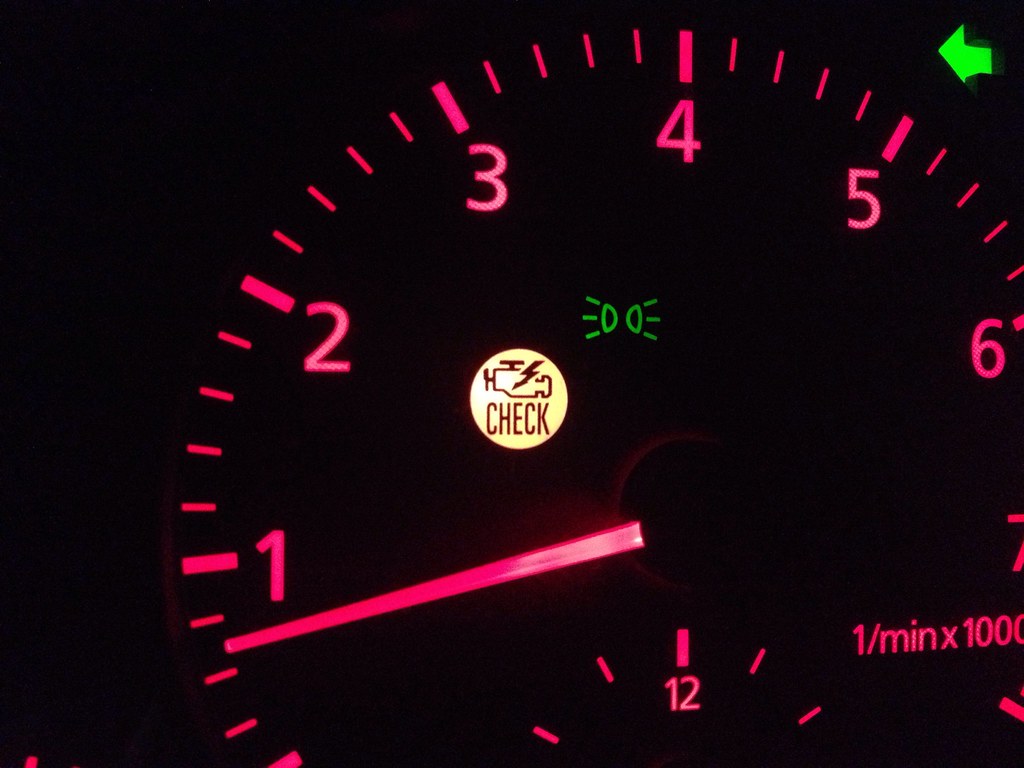
1. Check Engine Light
The check engine light is perhaps the most recognized and, at times, the most perplexing symbol on your dashboard. Shaped like a block with three lines running parallel to it, this amber warning indicates a problem with the engine or auxiliary systems. It’s designed to alert you to an issue that could affect your vehicle’s performance, fuel efficiency, or emissions, and while it doesn’t always signal an impending catastrophe, it’s never a light to dismiss.
According to AutoZone, this symbol indicates that “the anti-lock brake computer set a code and needs professional diagnosis,” though the provided context also broadly links it to engine problems. The “most common amber warning is the check engine light that indicates a problem with the engine or auxiliary systems.” The issues it signifies can range from “trivial periodic errors to serious mechanical faults.” The urgency of the situation often depends on whether the light is steady or flashing.
A steady light suggests a problem that needs attention soon, but you can generally continue driving cautiously. However, if the check engine light is flashing, it signals a more severe problem, such as a misfire, which could be damaging the catalytic converter. In such cases, “stop as soon as possible” and consider getting your vehicle to a mechanic immediately. While you can often drive with the check engine light on, it is “not advisable to do so for long without at least knowing what is causing the issue.” The car’s computer keeps an error log, which can be checked with an OBD-2 scanner to pinpoint the exact problem. Resolving the underlying issue will usually cause the light to turn off automatically.
Read more about: Beyond the Battlefield: 14 Essential War Movies You Need to Experience Again and Again
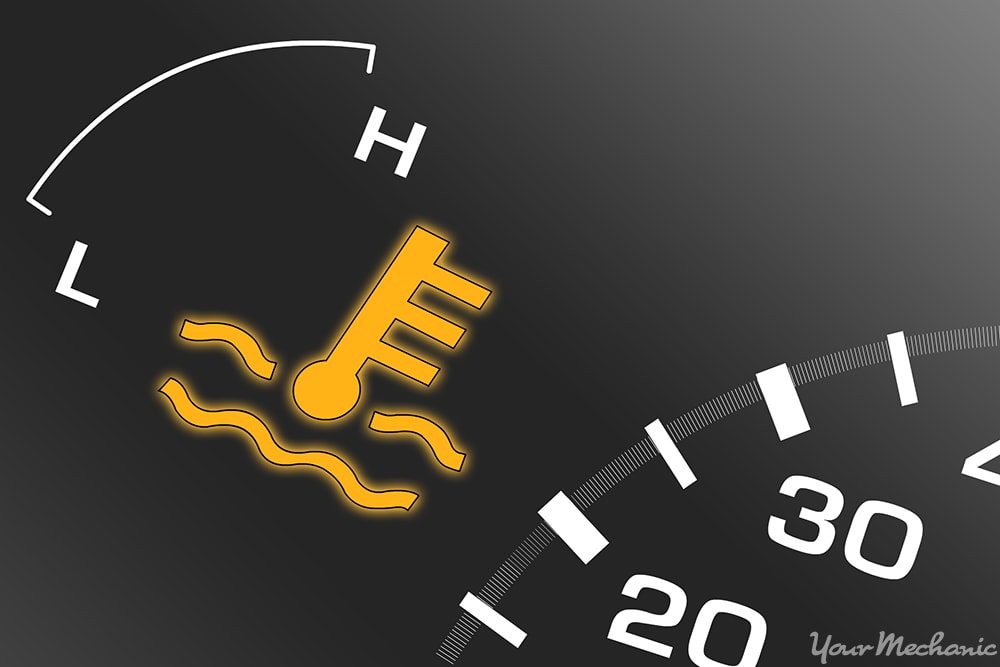
2. Coolant Temperature Warning Light
This critical warning light, shaped like a thermometer gauge floating in liquid, is a harbinger of potential engine overheating. It typically illuminates in red, indicating a serious problem that demands your “immediate reaction.” The text explicitly states, “This warning appears shortly before the engine overheats.” This is not a light to ignore, as an overheated engine can lead to catastrophic damage, including warped cylinder heads, blown head gaskets, or even a seized engine.
When you see the high coolant temp warning light, you need to “turn the engine off and let it cool” as soon as it is safe to do so. A temporary measure if you are still driving and can’t immediately stop is to “blast the heater (not AC) at full power” – this draws heat away from the engine, potentially buying you a few precious moments. However, the ultimate advice remains clear: “stop the vehicle as soon as possible.” Keep a close eye on your temperature gauge, and if it rises above the middle or into the red, it signifies that the car is at “risk of overheating.”
The implications of ignoring this warning are severe. “Letting the gauge go all the way into the red will cause the engine to overheat.” If you have “low or no coolant and the engine overheats,” the “engine, valves, pistons, and crankshaft will all suffer major damage.” The problem could be anything from a low coolant level, a faulty radiator cap, a non-functioning cooling fan, or a coolant leak. Addressing this immediately by checking coolant levels, inspecting for leaks, and ensuring the fan operates correctly is crucial to prevent expensive repairs and ensure your engine’s longevity.
Read more about: 15 Essential Car Maintenance Checks to Shield Your Wallet and Drive Safely: A Consumer Reports Guide to Preventing Roadside Breakdowns

3. Low Oil Level / Oil Pressure Warning Light
Among the most severe warnings you can encounter on your dashboard is the low oil level or oil pressure warning light. This symbol, often depicted as a wavy line below a measuring gauge, signifies a lack of liquid, specifically engine oil. The context unequivocally states, “This is one of the most serious warnings you can get. If you see this light, stop as soon as possible to prevent damage to the engine.” This is a red warning indicator, meaning it “requires your immediate reaction.”
Engine oil is the lifeblood of your vehicle’s engine, lubricating moving parts, reducing friction, and helping to dissipate heat. Insufficient oil pressure or a critically low oil level can cause metal components to grind against each other, leading to rapid wear and catastrophic engine failure. The risk of damage to the engine “grows with every second or yard that passes by” once this light illuminates. Therefore, “Should the light appear on your dashboard, stop as soon as possible, preferably immediately.”
While some vehicles might have an amber oil level warning that indicates an early sign of low oil, the red oil pressure light signifies an immediate and severe problem. If your car doesn’t have a red oil warning, then “treat the amber warning with the same severity.” Always check your oil level on a flat surface after the engine has cooled, and top it up if necessary. However, if the light persists after topping up, or if it indicates low oil pressure, it’s imperative to consult a mechanic, as a simple top-up might not resolve the underlying issue.
Read more about: 12 Celebrities Who’ve Navigated Public Courtrooms: From Traffic Woes to High-Stakes Legal Battles

4. Battery Charging Problem / Battery/Charging Alert
When a symbol resembling a car battery illuminates on your dashboard, it’s not simply indicating that your battery is low; it’s a “battery alert informs you that the battery isn’t getting charged while the engine is running.” This red warning light is a critical indicator of a problem within your vehicle’s charging system, most commonly pointing to a faulty alternator. The alternator is responsible for generating electrical power to run your car’s electrical systems and recharge the battery while the engine is operating.
If the battery isn’t receiving any charge, it “will deplete soon.” This means your vehicle is running solely on the remaining charge in the battery, which has a limited capacity. Once that charge is gone, your car will lose power, and the engine will eventually stop, leaving you stranded. AutoZone advises checking “battery terminals, alternator belt and battery condition” when this icon is activated and indicates that the “voltage level is below normal level and the vehicle’s charging system is not functioning properly.”
While you might be able to drive for a short period, especially during the day without heavy electrical loads, the clock is ticking. You should “stop as soon as possible” and get the vehicle to a repair shop. The problem could be a loose or broken alternator belt, a failing alternator, or even a damaged battery. Prompt attention to this light can prevent an unexpected breakdown and the inconvenience of being stuck without power.
Read more about: The Universal Language of Safety: Decoding 14 Standardized Dashboard Warning Lights Every Driver Must Know

5. Brake System Problem
The brake system warning light is one that no driver ever wants to see illuminate in red. This crucial indicator, often represented by the word “BRAKE” or a circle with two solid lines around it, signifies a “general brake system problem.” It’s a “red warning indicator” that “requires your immediate reaction” because any compromise to your braking capability directly impacts your safety and the safety of others on the road.
According to AutoZone, this icon “indicates one of three potential issues — parking brake is on, problem with braking system or fluid is low, or ABS problems.” While the parking brake being engaged is a common and easily fixable cause, a persistent brake warning light, especially if red, points to a more severe underlying issue. The problem could be a critical drop in brake fluid levels, which are essential for the hydraulic system that makes your brakes work effectively. If “fluid levels drop too low, the brakes will cease to function,” a terrifying prospect.
It could also indicate a malfunction within the brake system itself, beyond just worn pads or low fluid. Since brakes are arguably the most important safety feature of any vehicle, this light should never be ignored. If it comes on while driving, safely reduce your speed, avoid sudden braking, and pull over as soon as possible. Check the parking brake first, but if it’s disengaged and the light remains, or if you notice any change in brake feel, immediately seek professional inspection and repair.
Read more about: Rediscovering the Essentials: 13 Indispensable Workshop Tools You Might Be Forgetting
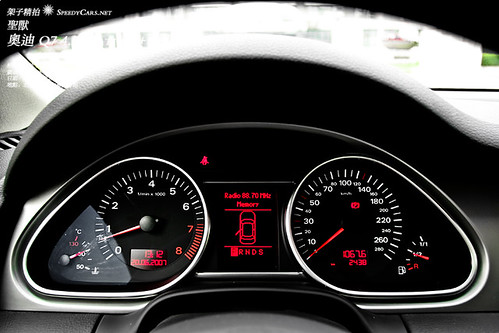
6. ABS Warning
Distinct from the general brake system warning, the ABS (Anti-lock Braking System) warning light typically appears as the letters “ABS” within a circle. This amber light signifies that “the ABS system is not functioning.” While it doesn’t mean your brakes have completely failed, it indicates that a crucial safety feature designed to prevent skidding during hard braking is currently inoperative.
The primary function of the ABS is to “allow you to steer the vehicle while braking and prevents skidding” by modulating brake pressure to individual wheels. When this system is active, particularly in slippery conditions or during emergency stops, it helps you maintain control and steer around obstacles. If the ABS warning light is on, your conventional brakes will still work, but they will lock up more easily under heavy braking, similar to older vehicles without ABS.
The context from AutoZone states that “the anti-lock brake computer set a code and needs professional diagnosis” when this symbol indicates ABS problems. While you might be able to drive with this light on, it’s crucial to understand that your vehicle’s safety features are compromised. You should drive more cautiously, increase your following distance, and have the system checked by a mechanic as soon as possible. Ignoring an ABS warning means you are driving without a vital layer of protection, particularly in adverse conditions.
Read more about: Navigating Medicare: 12 Essential Gaps in Coverage You Need to Understand

7. Airbag Warning
The airbag warning light, often depicted as a seated passenger with an airbag deployed or the letters “SRS” (Supplemental Restraint System), is a critical safety alert. This amber or red light “indicates the problem with one of the airbags, which will not deploy in case of an accident.” The SRS encompasses not only the airbags but also the seatbelt pretensioners, which tighten the seatbelts during a collision to hold occupants securely.
If this light illuminates, it means there’s a fault within the system, rendering the airbags or pretensioners inoperative. In a crash, this could have severe consequences, as these safety features are designed to protect you and your passengers from serious injury. The context clearly states, “Side airbags won’t activate in case of an accident if this warning is turned on.” This is not a minor inconvenience; it’s a direct compromise of your vehicle’s passive safety system.
You might also see a similar icon for “Airbag Off,” which “is similar to the airbag problem but the difference is the hollow airbag with an ‘X’ through it.” This means the airbag has been turned off manually, perhaps for a child seat. However, if the standard airbag warning light is on without you having manually deactivated it, or if it remains on, it warrants immediate attention from a qualified technician. Driving with a faulty airbag system means you are unprotected by these life-saving devices in the event of a collision, making it one of the warnings you should absolutely never ignore.
Now, let’s continue our journey through the vital communication system of your vehicle, moving beyond immediate dangers to address warnings that speak to the deeper integrity and performance of key systems. These lights demand timely diagnosis and repair, ensuring your vehicle remains reliable, safe, and efficient for the long haul. Understanding these next seven indicators will empower you to maintain your ride proactively, tackling issues before they escalate into major headaches.
Read more about: Seriously Where Did They Go? 15 Automotive Features That Vanished (Or Should) From Our Dashboards

8. Worn Brake Pads
Your vehicle’s braking system is a complex network, and while the general “Brake System Problem” light covers broad issues, a specific warning for worn brake pads is a crucial indicator of component wear. This symbol, often depicted as a circle with short lines on each side, directly informs you that your braking power is becoming insufficient for safe driving. It signals that these vital components have reached their operational limits and require attention.
Brake pads are designed to wear down over time, a natural consequence of their function as they create friction to slow your vehicle. When this light illuminates, it’s not usually an immediate emergency like a total brake fluid loss, but it is a pressing call to action. You shouldn’t dismiss this warning, as the integrity of your braking system is directly linked to your safety on the road.
Ignoring this warning can lead to significantly reduced stopping power, increasing your stopping distances and making emergency maneuvers perilous. Prolonged use of excessively worn pads can also damage other, more expensive braking components, such as rotors and calipers, turning a simple pad replacement into a much costlier repair. “Worn Brake Pads” can appear as a red or yellow warning, and in either case, it indicates that “the braking power is insufficient for a safe drive.”
Modern vehicles often incorporate intricate sensors into the brake pads that trigger this light when they’ve worn past a certain thickness. Addressing this promptly ensures your braking system remains effective, providing the confidence and safety needed. A quick inspection by a qualified mechanic can confirm the wear and ensure your vehicle is ready for the road ahead.
Read more about: The Insidious Erosion of Quality: Why a Single Cheap Auto Part Can Sink Your Business and Your Ride

9. Power Steering Problem
Steering your vehicle should always feel smooth and effortless, a comfort provided by the power steering system. When this crucial system encounters an issue, a warning light, typically depicted as a steering wheel with or without an exclamation point, will illuminate. This light alerts you to low fluid levels or imminent problems within the power steering mechanism, signaling a potential compromise to your vehicle’s handling.
A malfunctioning power steering system can make steering incredibly difficult, requiring significantly more physical effort to turn the wheel, especially at low speeds or during parking. This isn’t just an inconvenience; it can quickly become a significant safety hazard, severely impacting your ability to maneuver the vehicle quickly and precisely in an emergency. The context points out that this light “warns you of low fluid levels or imminent problems with the power steering system.”
If you notice this light, it’s imperative to check your power steering fluid reservoir and top it up if necessary. However, if the fluid level is adequate or if the light persists, it strongly suggests a deeper issue within the power steering pump, hoses, or the rack and pinion system itself. These components require professional diagnosis and repair.
Since this warning is typically a red indicator, it “requires your immediate reaction” to prevent a sudden loss of control or further damage. Driving with impaired power steering is not only physically demanding but also compromises your ability to react to road conditions, urging immediate professional inspection to restore safe and effortless steering.
Read more about: Buyer Beware: 15 Sedans That Become Money Pits vs. Those That Hold Their Value After Five Years

10. Transmission System Warning
The transmission is the heart of your vehicle’s drivetrain, meticulously managing power delivery from the engine to the wheels, ensuring smooth and efficient travel. When issues arise with this complex component, your dashboard might display a warning light shaped like a gear or a sprocket. Depending on the type of issue, the light may have a thermometer or an exclamation point inside, providing a visual cue to its specific nature.
This symbol, which can be amber or red, signals a range of potential transmission problems, from general malfunctions to critical overheating. Transmission problems are almost always serious. The general warning light indicates a fault that could affect shifting performance, fuel efficiency, or even prevent your vehicle from moving, manifesting as harsh shifts, delayed engagement, or an inability to select gears. “Transmission problems are serious, so if see this symbol, stop as soon as possible and get your vehicle to a mechanic for repairs.”
A more specific and equally serious variant is the “A/T Oil Temp” or “Transmission Temperature” light. When this light turns on, it means the transmission fluid is about to overheat, which can quickly lead to severe internal damage. High temperatures can break down transmission fluid, reducing its lubricating and cooling properties. The advice is clear: “Park the vehicle and let it cool, then drive or tow it to a mechanic.”
Overheating can cause irreversible damage to seals, clutches, and gears, resulting in extremely costly repairs. Prompt attention to any transmission warning, whether a general fault or an overheating condition, is non-negotiable for your vehicle’s health and longevity. Ignoring these signs can lead to complete transmission failure, a repair bill no driver wants to face.
Read more about: Read This First: 14 Popular Trucks and SUVs That Become Costly Money Pits Once They Hit 80,000 Miles
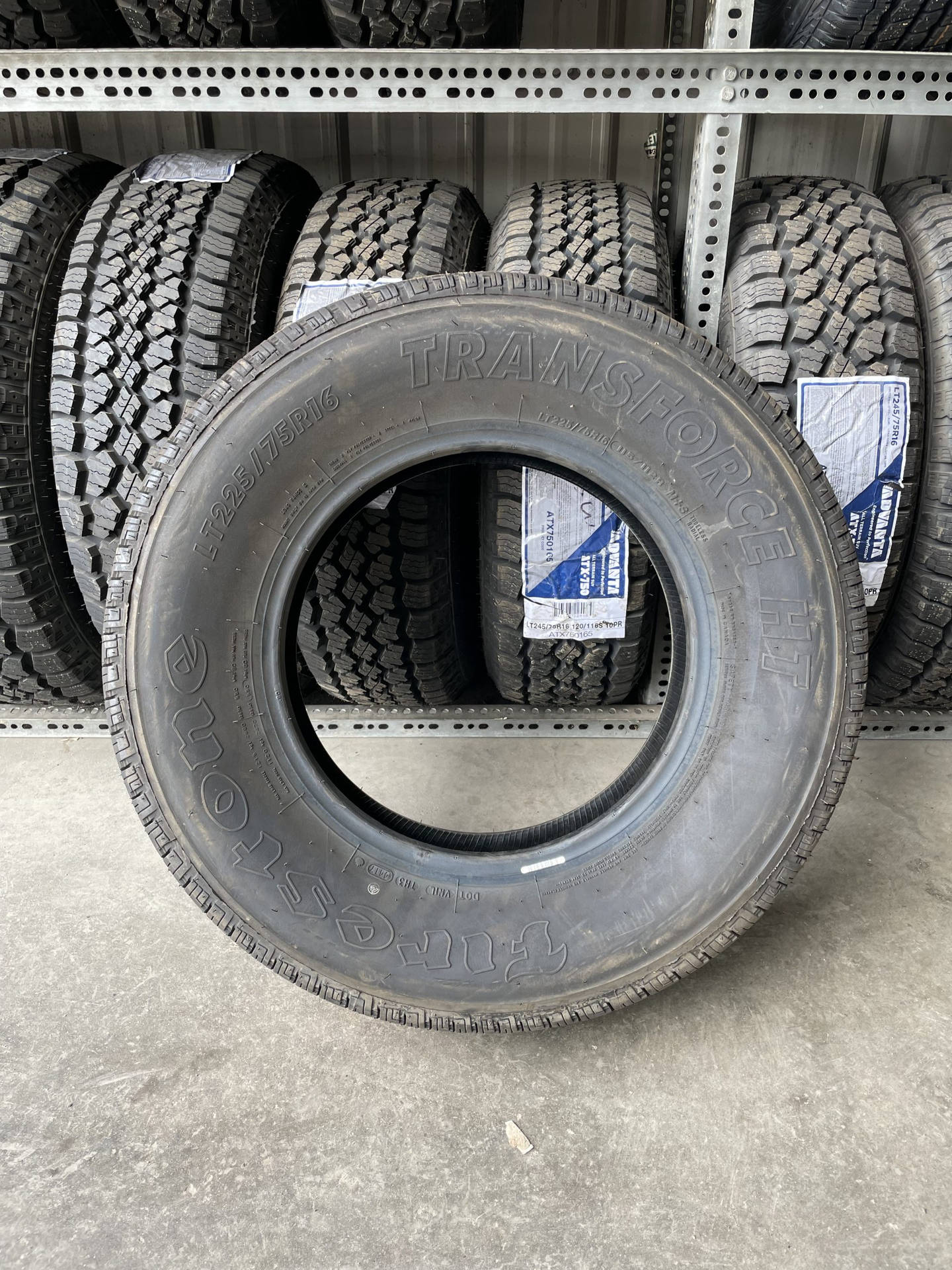
11. Tire Pressure Warning Light (TPMS)
The unsung heroes of your vehicle, tires, are often overlooked until a problem arises. The Tire Pressure Monitoring System (TPMS) light, typically depicted as a flat tire with an exclamation point inside, is your dashboard’s way of reminding you of their importance. This amber warning illuminates when “one of your tires is overinflated or running flat,” according to the context, or if there’s a “manipulation of tire sensors.”
Maintaining proper tire pressure is critical not only for optimizing fuel efficiency but, more importantly, for vehicle handling, stability, and overall safety. Underinflated tires can lead to increased rolling resistance, premature wear, and a higher risk of blowouts, especially at highway speeds. Conversely, overinflated tires can reduce traction and make your ride unnecessarily harsh.
This light helps you avoid these risks by alerting you to a deviation from the manufacturer’s recommended pressure levels, giving you a chance to rectify the situation before it becomes dangerous. When this icon activates, “drivers should check the pressure in their tires.” A persistent light after inflation could also point to a slow leak or a faulty sensor, which also needs addressing.
While some vehicles allow manual resetting of the warning light after correction, others may require professional service to address sensor issues or calibrate the system. It’s crucial to check all tire pressures with a reliable gauge and inflate them to the manufacturer’s specifications. Addressing TPMS warnings promptly extends tire life, optimizes fuel economy, and crucially, maintains the vehicle’s intended handling and safety characteristics.
Read more about: Driving Towards a Safer Future: Mandatory Car Safety Features Shaping the Road Ahead for All Drivers

12. ESP / Traction Control Warning
Modern vehicles are equipped with sophisticated electronic stability and traction control systems, often abbreviated as ESP (Electronic Stability Program) or TCS (Traction Control System). These intelligent systems are designed to significantly enhance vehicle stability and prevent loss of traction, particularly during hard braking, aggressive cornering, or when navigating slippery surfaces. The warning light for these systems, typically a car skidding icon or the letters “ESP” or “TCS,” illuminates in amber when the system is not functioning correctly.
The ESP system, for instance, is designed to “assist you during hard braking and cornering” by individually braking specific wheels or reducing engine power to help maintain control. Similarly, the TCS system actively “prevents skidding” by detecting wheel spin and applying corrective measures. If this light is on, it directly indicates that these vital safety features are currently inoperative, compromising a crucial layer of your vehicle’s active safety.
While your conventional brakes will still work, and you can generally continue driving, it’s important to understand that your vehicle’s ability to recover from a skid or maintain traction in challenging conditions will be significantly compromised. This means relying solely on your own driving skills, which can be particularly risky in adverse weather. The context from AutoZone states that “the anti-lock brake computer set a code and needs professional diagnosis” when this symbol indicates ABS problems, and ESP/TCS issues are often linked.
You might also see related lights: “Traction Control Activated” or “Traction Control Off.” However, if the ESP/TCS warning light remains steadily on, it signifies a fault that means the system “will not assist you on the road.” Driving with this light on requires increased caution, wider following distances, and slower speeds, especially in adverse weather or on uneven roads, and warrants a professional diagnosis.
Read more about: Read This First: 14 Popular Trucks and SUVs That Become Costly Money Pits Once They Hit 80,000 Miles
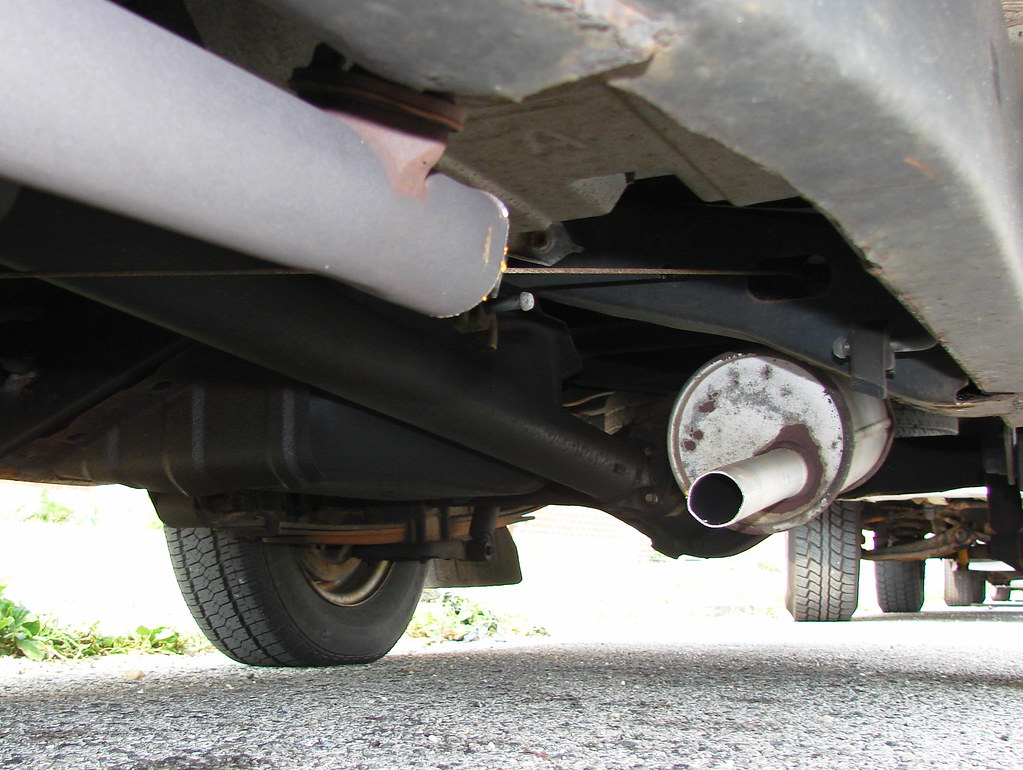
13. Catalytic Converter Warning
The catalytic converter is an indispensable component of your vehicle’s exhaust system, playing a critical role in reducing harmful emissions produced by the engine. When an issue arises with this intricate device, an amber warning light may appear on your dashboard. This light signifies a “clogged catalytic converter,” a condition that can severely impede the flow of exhaust gases, preventing them from leaving the engine efficiently and leading to significant performance problems.
A clogged catalytic converter creates “pressure build-up in the exhaust manifold and loss of power.” This isn’t just an environmental concern; it directly impacts your vehicle’s drivability, performance, and fuel economy. Drivers might experience sluggish acceleration, a significant reduction in engine power, a strong sulfur smell from the exhaust, or the engine running hotter than usual due to restricted exhaust flow.
Ignoring this warning can lead to more severe and costly engine damage over time, as the engine struggles against the back pressure. While the more general check engine light might also illuminate for catalytic converter issues, a dedicated catalytic converter warning provides more specific insight, allowing for targeted troubleshooting. The problems it causes can range from reduced performance to potential engine misfires.
Addressing this problem often involves diagnostic checks to confirm the clog or malfunction and may require cleaning or, in severe cases, replacement of the converter. Timely intervention ensures your vehicle meets emissions standards, runs efficiently, and prevents more extensive and expensive damage to the engine, safeguarding both your wallet and the environment.
Read more about: 15 Essential Car Maintenance Checks to Shield Your Wallet and Drive Safely: A Consumer Reports Guide to Preventing Roadside Breakdowns

14. Service Reminder
While not a warning of an immediate mechanical failure, the Service Reminder light is arguably one of the most proactive and financially savvy lights on your dashboard. Often depicted as a wrench, a spanner, or a vehicle being serviced, this indicator “monitors the number of miles you’ve crossed, and when the oil service is nearly due, the indicator will turn on to remind you it’s time to change it.”
This amber or sometimes green light serves as your vehicle’s gentle nudge, encouraging you to adhere to its routine maintenance schedule, which is fundamental to its long-term health, reliability, and optimal performance. Regular maintenance, including timely oil changes, filter replacements, fluid checks, and system inspections, prevents minor issues from escalating into major, costly problems. Ignoring service reminders is a common pathway to deferred maintenance, leading to accelerated wear and tear.
The context specifically mentions that this icon “reminds you that your regular oil service change is due in less than 500-1000 miles,” providing a useful window to schedule your appointment. It’s an informational prompt that, when heeded, can dramatically extend the life of your engine and other critical systems, prevent inconvenient breakdowns, and significantly help maintain your vehicle’s resale value.
Think of it as your car gently, yet firmly, nudging you to schedule that appointment with your trusted mechanic, ensuring smooth sailing and reliable performance for many miles to come. Adhering to these reminders is a testament to responsible vehicle ownership, safeguarding your investment and ensuring you have a dependable mode of transport.
Read more about: From Dreamy Encounters to Total Nightmares: Fans Spill the Tea on the Best and Worst Celebrities They’ve Ever Met
These dashboard warning lights are far more than just illuminated icons; they are the voice of your vehicle, communicating vital information about its health and operational status. From the immediate urgency of a red oil pressure light to the proactive prompt of a service reminder, each symbol serves a critical purpose in keeping you safe and your vehicle running optimally. By taking the time to understand these 14 essential warnings, you transform from a driver who merely reacts to a driver who understands, anticipates, and maintains. Embracing this knowledge is not just about avoiding costly repairs; it’s about fostering a safer, more reliable driving experience for yourself and everyone on the road. Remember, a quick glance at your dashboard can often tell you all you need to know about what’s going on under the hood – don’t ignore its whispers, and certainly, don’t ignore its shouts. Drive smart, drive informed!

